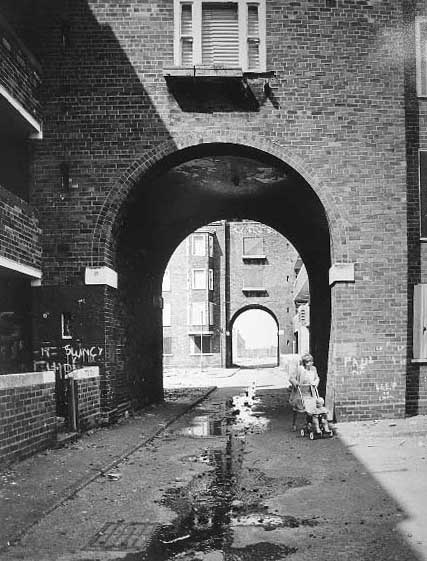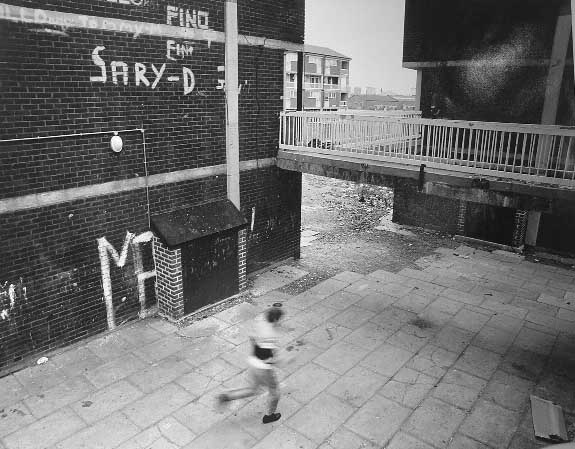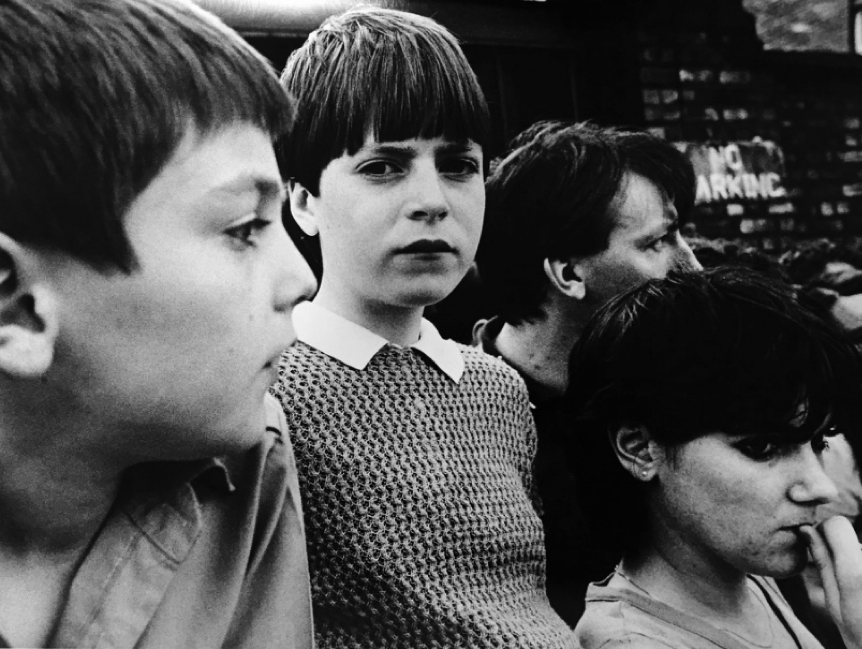


Changing the Picture
Changing the Picture: Using photography to rethink our approaches to inner city life
Dan Warner is a 3rd year PhD Researcher and Teacher at the University of Liverpool. Having completed a B.A. in History and an M.A. in Cultural History, his thesis utilises social documentary photography to explore working class culture in British inner cities during the 1970s. Dan completed a placement at Open Eye Gallery in 2015, composing and delivering the Spoken Words and Photographs event during which images from the Gallery’s archive were matched with local oral histories. In the following series of blogs, Dan explores the research conducted, including representations of life in British inner cities at the time and the uses of urban street photography as an historical source. This first blog explores the idea behind using photography like John Stoddart’s to revaluate how we remember and visualise the inner city at this time.
—
“I was just taking pictures of where I lived, basically. There was no political motive in any of the photographs. I just loved photography.” – John Stoddart
John Stoddart hasn’t always been a celebrity and glamour photographer. For a period of four years in his twenties John would take a series of photographs that represent a detailed and evocative document of Liverpool at the time. Whilst talking to me about what he remembers about this time in his life, John is keen to keen to stress the personal motives driving him. However, whether intended or not, John was pointing his camera at a community during a moment of extreme transition. Situated in a very particular time and embedded in a very particular place, the inadvertent social and historical significance of these photographs is clear.
“Ironically, when you look at them they are, by their very definition, political. You’ve only got to look at some of the housing conditions in those pictures. Some of those people had to live in bloody slums.”
The setting of John’s photographs – Vauxhall and Everton – provides us with a rich topic to explore further.
Council housing, high-rise flats, tenements, estates, the inner city. A collection of seemingly neutral nouns that instead conjures an array of strong images and a rich inference of not always positive meanings. Hotly contested elements of post-war political and social policy, intricately tied into the moods and fortunes of the nation, many of the terms have now become stigmatised beyond reasonable debate – reduced to a series of “no-go” areas endlessly parodied and stereotyped in popular culture and the national psyche.
From the mid-1950s onwards, British cities were buffeted by a series of material, social and economic changes. Under the optimistic spirit of modernity, city centres and inner cities were comprehensively redeveloped. The cramped, out-dated and in many cases squalid rows of terraces were razed in the name of progress and replaced with bold and confident high-rise blocks and modernist estates, symbolic of the new metropolitan lifestyles that urban modernity would foster. The bullish mood of the day is apparent in the Liverpool Echo, here commenting on a 1958 exhibition entitled Liverpool of the Future.
“The exhibition will be of particular interest to the residents of Liverpool’s 375 darkest acres, those 39,000…living in the forest of 90 to 130-years-old terraces…in Netherfield, Vauxhall, St. Domingo and Westminster…they will see what the future holds for the dreary, narrow streets and blackened houses which have been their familiars for too long.”
However, as the seventies ushered in economic crisis, recession and a breakdown in the post-war consensus, British inner cities began to erode into disrepair. In seeking to understand precisely what had gone wrong, a very particular aftermath narrative was constructed. It is one that guides our opinions, imagery and policy-making to this day. A tale of strong and cohesive terraced communities smashed by overzealous planners and politicians who deemed them slums, fit only for the bulldozer. A myriad of social, political and economic changes was downplayed in a rush to scapegoat the design faults of the planners and architects, the possible corruption of local politicians and, perhaps most unfairly, the very nature of inner city residents. On a much more basic level, this narrative simply ignores the everyday practices and experiences of working class life that continued regardless of the instability of the landscape around them.
As an historian, herein lies the challenge. Piecing together the everyday activities, the ordinary lives and the memories in the face of such an overpowering and unhelpful stigma. The Open Eye Gallery’s archive has proven a useful tool in this challenge, helping to reconstruct the lives and experiences of those who lived through these changes.
“So what I used to do was, almost every day, I’d literally just walk the streets of Liverpool with a pair of cameras and I started taking pictures, finishing up around ’84. I was doing a part-time job in the Post Office. I’d started at six in the morning, I clocked out at one and I became a photographer for the afternoon. I didn’t look into the things that were happening. It was laid out on a plate for you, really. It was in-your-face street photography, a great piece of street theatre happening every day. I printed all the pictures myself and I approached the Open Eye Gallery.”
What has been left behind from this is a wonderful archive of inner city Liverpool in the early 1980s. The photographs form a curious mixture of urban blight, poverty and hardship, but also of a strong community spirit and stoical attitude, all overlain with a tender and moving sense of humanity. In the following series of blogs, I join these photographs alongside the personal testimony of John, local residents and commentary from the time to present the histories of everyday life so often ignored amidst the narrative of overwhelming decline. Forming a counterpoint to endless statistics of population losses, factory closures and reports of poverty and dereliction, John’s photographs show a vibrant landscape, inhabited. Perhaps then, these photographs stress not so much the failure of town planning or the British economy per se, but a much less well covered issue – the coping mechanisms and ordinary everyday life that continued in spite of everything.

